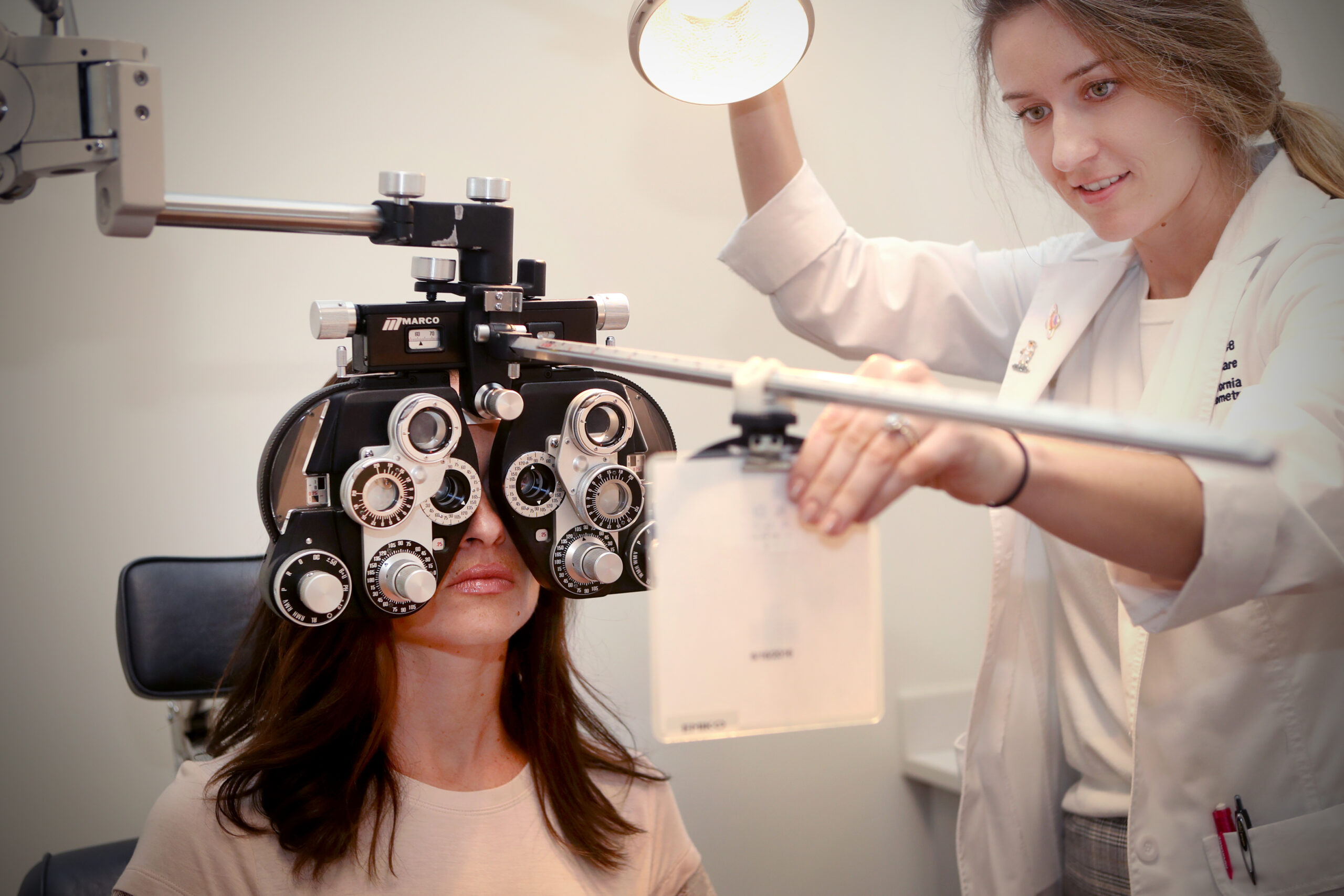

By Emily Stephey, OD, FAAO
Marshall B. Ketchum University
The number of adults with diabetes is projected to triple by 2060, and it is no surprise that the prevention and treatment of diabetic eye disease will play a large role in every optometrist’s future. As is true for various systemic health conditions, it is better to be proactive about prevention than to be reactive about complications. It is imperative for optometrists to continually emphasize the importance of close monitoring and routine dilation to patients with diabetes, even if their vision is 20/20 and there are no current signs of diabetic eye disease. In addition to this, asking patients about their compliance with medications, their last HbA1C value and when they last saw their primary care provider or endocrinologist, are all important pieces of information for insight into their overall health.
Optometrists need to work collaboratively with other health care providers in a team-based approach to treat individuals with diabetes. This coordination of care among providers can ensure the best prognosis for the patient’s systemic health, and ultimately their ocular health. A patient’s long-term prognosis is always improved when health care providers communicate with each other to identify ways to get patients the care they require, or to prevent the need for treating certain complications in the first place. As all health care providers consider how to respond to the future burden of diabetes prevalence, it is essential for optometrists to play their important role in delivering better health outcomes for these patients.


We are all familiar with the fact that patients with diabetes can experience retinal complications such as non-proliferative retinopathy, proliferative retinopathy and diabetic macular edema. For patients with mild to moderate non-proliferative diabetic retinopathy, optometrists may monitor these patients closely.
Patients with severe non-proliferative retinopathy, proliferative retinopathy and/or diabetic macular edema warrant referral and coordination of care with a retinal specialist for potential treatment. The three main treatments for these patients are intravitreal anti-VEGF, intravitreal steroids and various laser procedures. In addition to the potential high cost of these treatments and the fact that they must be repeated, their accessibility is complicated by the individualized nature of the care; they are not “one-size-fits-all” and not every patient responds to treatment in the same way. It is for this reason that optometrists and other health care providers must work together to mitigate any barriers to care, when possible.


Most of the new innovations of retinal treatment seek to address barriers with accessibility, compliance and burden of follow-up care. After the U.S. Food and Drug Administration (FDA) approval of the first intravitreal anti-VEGF injection in 2006, there had been three main anti-VEGF medications in use for the treatment of diabetic eye disease and there was not much change in additional options for around 15 years. Since 2019, there have been two new anti-VEGF medications that have been approved, in addition to several biosimilars. At present, there are more choices for intravitreal anti-VEGF injections than we have had historically, which not only gives us more options to treat the individual patient but in theory may also drive down the cost as well.
There have also been new solutions in treatment to reduce the burden of follow up care for patients with diabetic eye disease. One example involves a port delivery system that is implanted and delivers intravitreal anti-VEGF over time, in hopes to extend the time between office visits. The specific system that was on the market has been recalled but it is only a matter of time before other similar products will make an appearance in the future. Additionally, one of the intravitreal anti-VEGF agents currently available was recently FDA approved at a higher dosage/concentration to again, in theory extend time between office visits. There has also been recent research to suggest that it is acceptable to monitor certain patients with diabetic macular edema versus treat. Protocol V of DRCR.net involves monitoring patients closely if their visual acuity is 20/25 or better and deferring treatment even in the presence of diabetic macular edema. This may allow patients to decrease the total cost and time of their overall treatment burden.
In addition to potential retinal complications, patients with diabetes may also experience many non-retinal ocular complications that optometrists can manage and/or monitor. Such conditions include but are not limited to: transient change in refractive error, ischemic cranial nerve palsies, cataracts, tear film abnormalities, increased risk of corneal abrasions and NA-ION
When caring for a patient with diabetes, prevention of diabetic eye disease is ideal. This can be achieved through thorough patient education and interprofessional communication. Coordination of care with other health care providers is essential in ensuring the best outcomes for patients’ systemic and ocular health. If and when diabetic eye disease is present, there are many treatment choices and as these options change to address barriers to care, it is imperative that optometrists stay up to date with advancements.
About the author: Dr. Emily Stephey joined Southern California College of Optometry (SCCO) at Marshall B. Ketchum University as a full-time faculty member with clinical and laboratory teaching responsibilities in the Primary Eye Care and Ocular Disease service in 2020. With this, she is a dedicated member of the American Optometric Association and California Optometric Association. Dr. Stephey received her Bachelor of Science degree in Biology from California State University, Fullerton and graduated summa cum laude with her Doctor of Optometry degree from the Southern California College of Optometry (SCCO) at Marshall B. Ketchum University in 2017. She then completed a residency in Primary Care and Ocular Disease at HuHuKam Memorial Hospital in Sacaton, Arizona. After residency and before joining MBKU, Dr. Stephey worked for a retinal specialist in Torrance, California.



